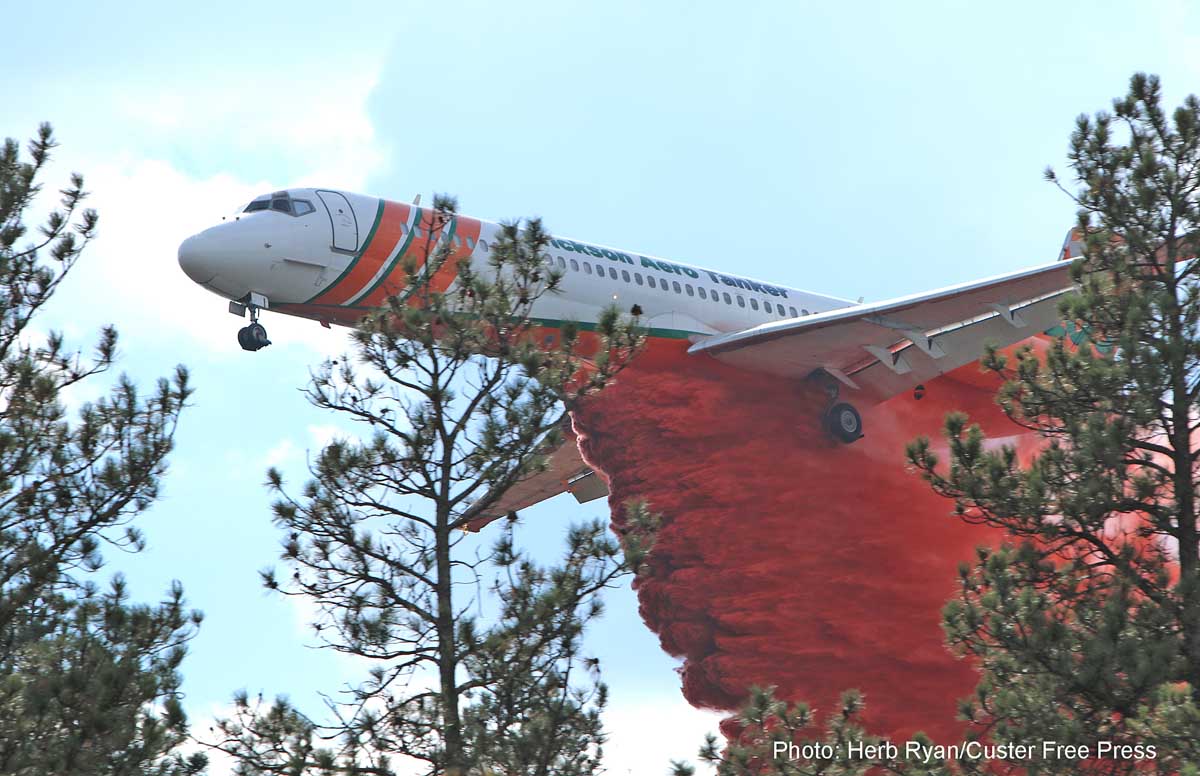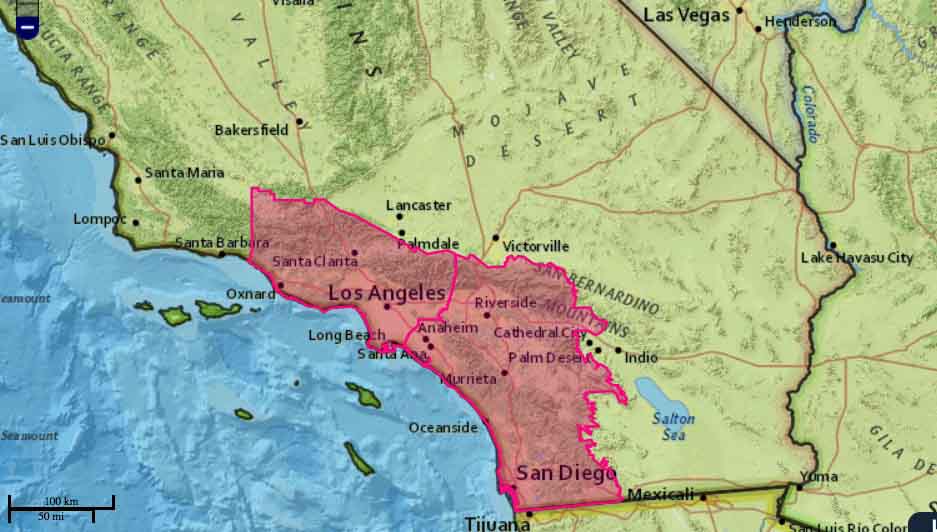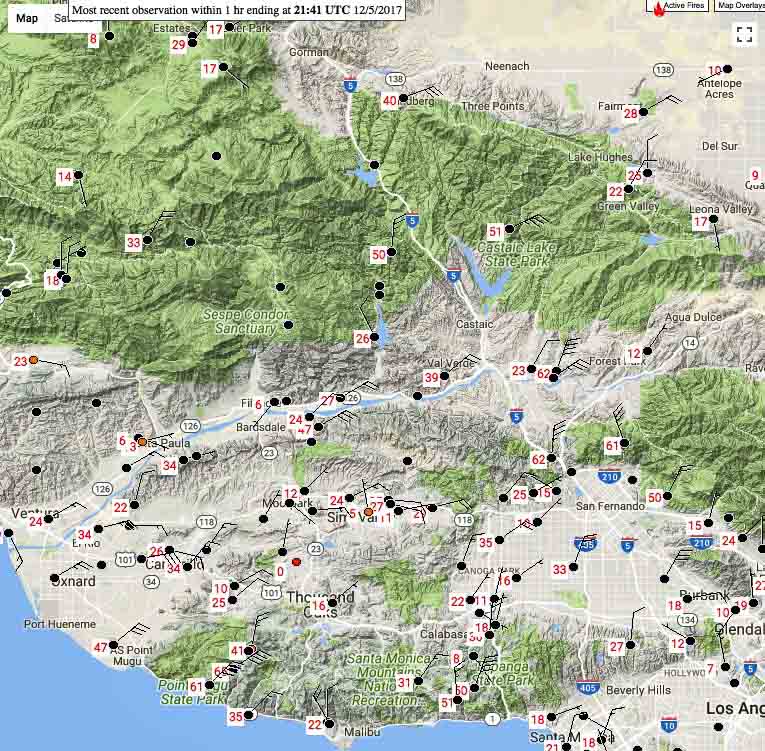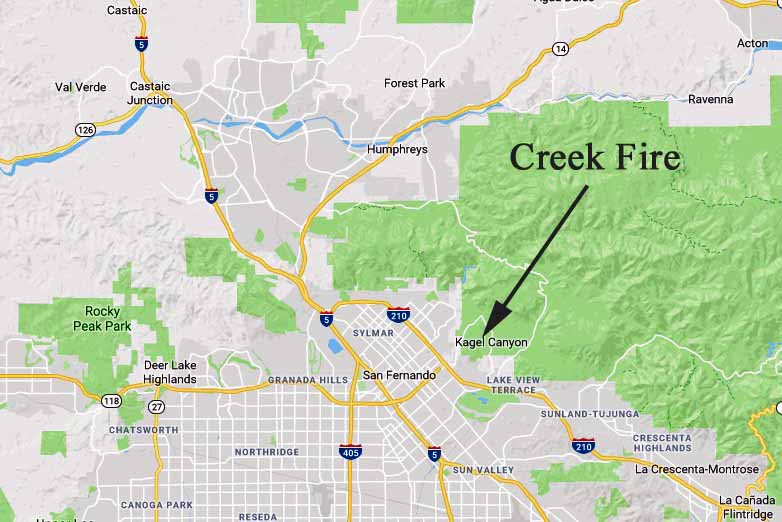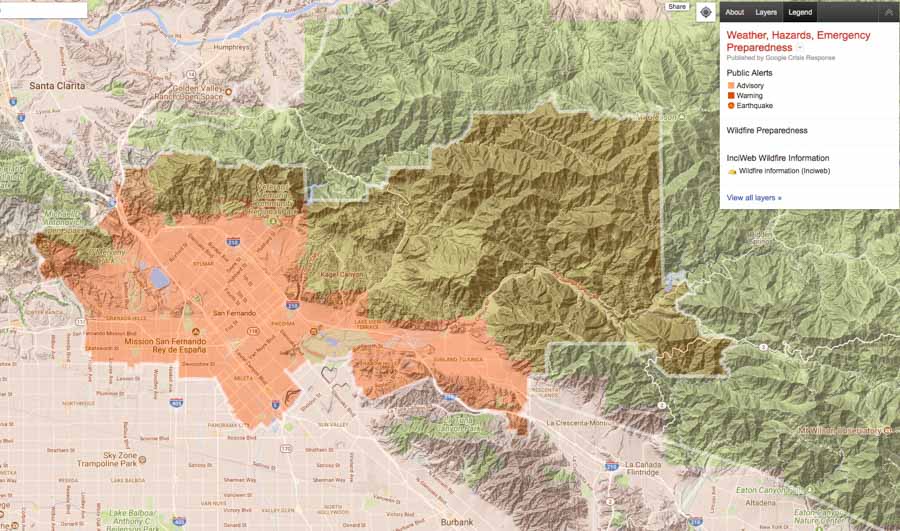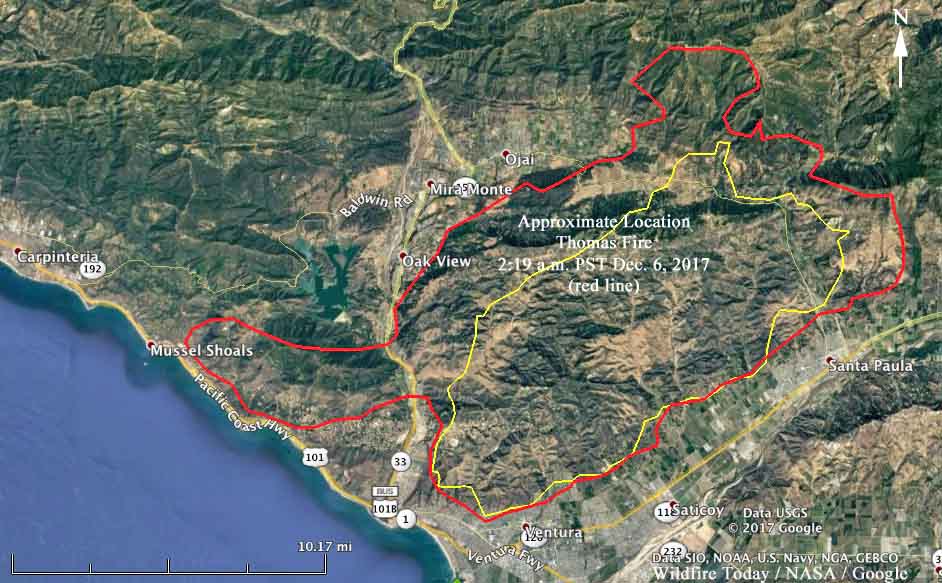
(UPDATED at 10:20 p.m. PST December 6, 2017)
The Thomas Fire north of Ventura, California continued to grow on the northeast side, east of Ojai on Wednesday. The Ventura County Fire Department reported Wednesday evening that the fire has now burned 90,000 acres.
****
(Originally published at 6:36 p.m. PST December 6, 2017)
After burning into Ventura, California on Monday the Thomas Fire continued to grow, pushed by very strong Santa Ana Winds usually out of the northeast. On Tuesday the winds were not quite as strong but the problem for firefighters was the variable direction. Beginning at 11 a.m. winds out of the east and south spread the fire across Highway 33, the route from Ventura to Ojai, through oil fields and over a ridge until it reached and in some places crossed, Highway 101 northwest of Ventura where it reached the beach in some places. Helicopters dropped water on the fire overnight near Foothill Road and at Solimar Beach.
This is the #ThomasFire from overnight near the beach at La Conchita. Latest on all the destructive fires burning in #SoCal (evacuations, damage, school closures) tops Ch5 @KTLAMorningNews at 4am. pic.twitter.com/HtbecwO99b
— Chris Schauble (@ChrisKTLA) December 6, 2017
The Thomas Fire is now well north of Highway 150, east and northeast of the city of Ojai.
Firefighters have not had time to accurately tally how many structures have been destroyed — the latest estimate is 150 including the Vista Del Mar Hospital — but the number may be significantly larger when the smoke clears.
On Tuesday fire officials reported the fire had burned 55,000 acres. Wednesday morning a spokesperson for the Ventura County Fire Department said it had increased to 65,000 acres.
Over 1,000 personnel are fighting the blaze. At least 27,000 residents were ordered to evacuate Tuesday, but that number grew when the fire crossed Highway 33 and threatened the coastal areas.
The wind has made it difficult to use firefighting aircraft, but the forecast for the mountains northeast of Ventura on Wednesday includes 10 to 14 mph northeast winds gusting at 16 to 21. This may make the use of the 30 air tankers that will be in California Wednesday, possible. The forecast also predicts 74 degrees and 9 percent relative humidity, which are weather conditions conducive to significant fire spread.




